Ultimate Tour Guide to Prague, Czech Republic
Prague, a city with over a million residents in central Europe, possesses all the qualities of a capital city. It has a strategic position on the Vltava River, a UNESCO World Heritage Site for its historic core, a variety of architectural styles, a place of significant historical events, and the birthplace of renowned figures and institutions. The city is also home to a rich cultural scene, sports activities, and active nightlife. The name Prague is believed to originate from a water threshold located beneath the Charles Bridge. The city’s most notable landmarks include the vast Prague Castle complex and the historical connection between the Old Town and Lesser Town, but there is much more to explore. The Rudolfinum, National Theatre, National Museum, and numerous sacred buildings showcase Prague’s cultural and artistic heritage. Additionally, the city boasts modern art pieces, including the controversial works of David Cerny. Prague is renowned as one of the most stunning cities in Europe and has been a constant source of inspiration for artists across all mediums.

Getting around the city:
Walking:
Prague is famous for being a highly walkable city. Those who like to discover the old and new parts of the city on foot can walk from Wenceslas Square to Old Town Square or from the Old Town to Charles Bridge and the Castle District. However, the majority of the streets are paved with cobblestones, making it quite challenging for older or disabled travellers to navigate effectively. Drivers are required to give way to pedestrians at all designated pedestrian crossings, but it is advisable to make eye contact with the driver first to ensure that they are aware of your presence.

It is worth noting that in the Czech Republic, it is illegal to cross a pedestrian crossing when the red man signal is illuminated, and this could carry a potential penalty of 2000CZK.
Public Transport:
The public transportation system in Prague is well-developed and offers various options, such as three subway lines, many bus and tram routes, a funicular to Petrín Hill, and a few ferries across the Vltava River. The schedules for buses, trams, and Metro are available at stops, and the Metro runs from early morning until midnight, while buses and trams start and end earlier or later to connect with the Metro. The public transportation system is efficient if you know how to use it, although you may need to change routes occasionally. The tram routes may change due to construction or maintenance, so it’s best to check the civic transit authority’s website (https://www.dpp.cz/en#search-connections-tab) for updates in English. Ticket prices can be found on the website, and there are discounts for children under 15 years old, free travel for children under 6 years old, and free travel for children from 6 to 10 years old and individuals 70 and older who can provide official identification such as an EU ID card or passport (a copy of the document is not sufficient).
The public transportation system is ample and easy to use, consisting of three metro lines, numerous bus and tram lines, and a funicular to Petrín Hill. All of these are integrated into Prague integrated transport (PID). Timetables for trams and buses are available at stops, and the Metro operates from early morning until around midnight, with buses and trams starting earlier and finishing later to connect to the Metro. If you use public transportation, it’s best to plan your journey using the schedule website, as trams may be rerouted due to reconstruction or maintenance. To buy tickets, you can use ticket machines that accept coins, credit cards, and sometimes contactless cards or buy them from tobacco shops or Prague Public Transit offices located at some Metro stations. Ticket prices can be found on the website. Discounts are available for children under 15, and free travel is available for children under 6 years old and individuals aged 70 and above, as well as for children aged 6 to 10 who can prove their age with an official document such as an EU ID card or passport (a copy of the document is not sufficient). If you plan to travel more than four times a day for 90 minutes (6 hours), it’s recommended to purchase a 24-hour or 3-day ticket for the economy.

While we visited Prague, we purchased a 72 hours ticket. When you buy a ticket and start your first journey, you just need to get the ticket processed with one of the ticket machines (yellow box) on the bus/tram/metro. The machine prints the start date and time on the ticket. You will need to keep the ticket, and until its expiry, you can use public transport. During our stay, we met with inspectors many times, so it is not recommended to use public transport without a ticket.
The public transportation system in Prague operates during the night and is quite extensive. Night buses and trams run every 30 minutes (every 20 minutes on Fridays, Saturdays, and Sundays) between midnight and 5 am. The central exchange stop at Lazarská in the centre of Prague is where trams leave every 15 minutes during this time, and all night trams pass through this stop. You can easily switch tram lines here if necessary. Trams and buses wait for connecting trams/buses at all-night exchange stops. Remember to stay behind the safety line on the floor, about half a meter from the edge of the platform, in the Metro. It is customary to stand on the right side and walk up on the left side when using escalators. When using public transport in Prague, it is proper etiquette to allow elderly people, pregnant women, or disabled individuals to sit down.
Taxi:
Beware of local taxis in Prague as they are infamous for overcharging, especially if you hail them on the street or from a touristy area stand. They may manipulate the meter or not turn it on, then ask for an excessive amount. It’s recommended to negotiate the price beforehand. Generally, rides within the tourist area should cost between 150 CZK to 250 CZK, while the price from the airport to the city centre is approximately 500 CZK. To avoid being scammed, confirm an estimated fare in advance. It’s advisable to use a mobile application with a fixed price or call one of the major Prague taxi services.
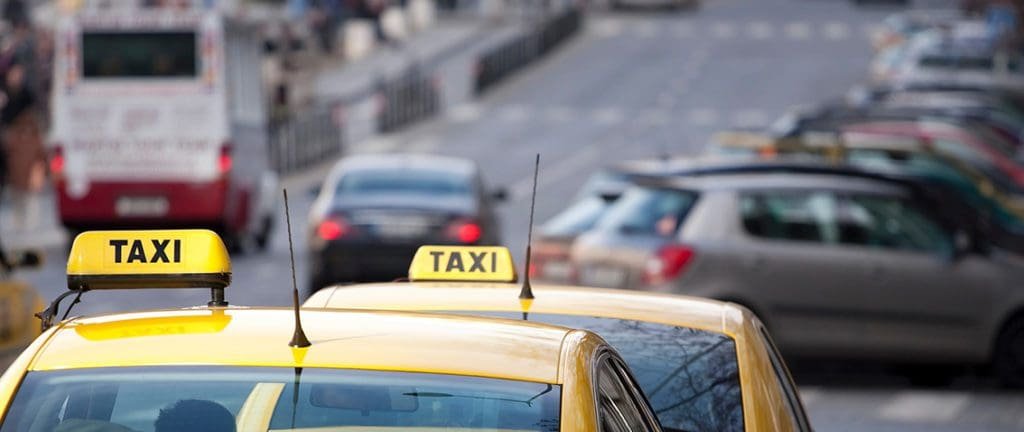
We recommend using https://www.aaataxi.cz/en/home/ to check and book taxi rides in advance or use taxi services that are regulated by apps like Uber. This could give you full control over the cost of the journey and prevent the driver from trying anything to increase the price to be paid. You can check for prices here: https://www.aaataxi.cz/en/prices/
Self-Guided tours:
You can choose to use a Hop-on, Hop-off service as well. In many ways, this is a time-efficient way to get around Prague, as these buses will take you directly to the doorstep of every attraction in the city. So if you are on a short city break, then it is recommended. However, it does come at a cost. So be prepared to pay significantly more than you would if you only used public transport. At the time we visited the city, it was 725 CZK for an Adult, 400 CZK for a child up to 12Y and 1800 CZK for a family.
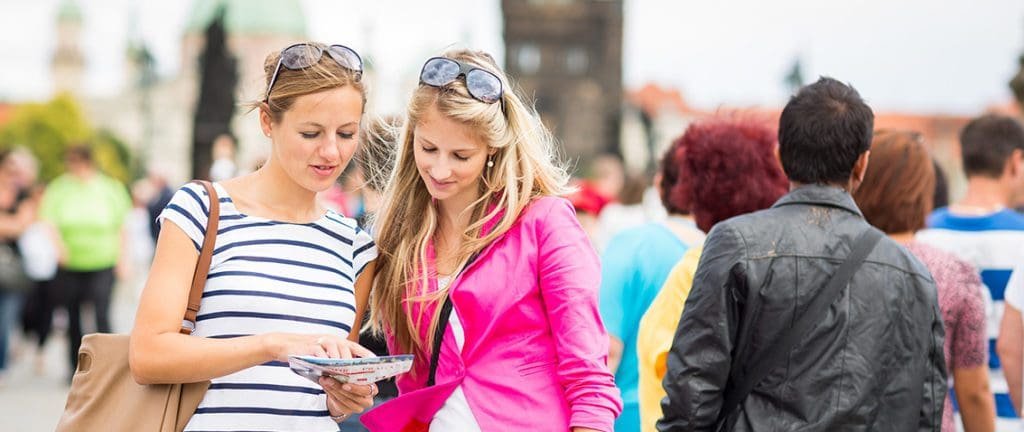

Hop-on Hop-off Bus
Say goodbye to transportation worries!
Book your hop-on hop-off bus tickets now:
Pro Tip
If you buy the ticket at the Old Town Square, you will find the Hop-on Hop-off tour ambassadors standing around with a branded umbrella. You can negotiate the price to save some money. Competition is high, and if they see you walk away, they will start trying to convince you to reduce the prices. We saved a few hundred CZK with this, so it is worth trying.
Must-see attractions:
Prague Castle
Prague Castle is a historical monument and complex located on a hill overlooking the city of Prague, Czech Republic. It is one of the largest castle complexes in the world, covering an area of approximately 70,000 square meters. The castle has a long and fascinating history, dating back to the 9th century when it was founded as a fortified settlement. Over the centuries, it has been expanded and renovated many times, reflecting the architectural styles of the different periods.

The castle complex consists of several buildings, including the magnificent St. Vitus Cathedral, the Old Royal Palace, the Basilica of St. George, and the Golden Lane. These buildings are connected by picturesque courtyards and gardens, creating a unique atmosphere that attracts millions of visitors every year.
The most impressive building within the castle complex is the St. Vitus Cathedral. This Gothic cathedral was built over several centuries, starting in the 14th century, and features stunning stained-glass windows, intricate stone carvings, and impressive vaulted ceilings. The cathedral is also the final resting place of many Czech kings and Holy Roman Emperors.

Prague Castle
Book your tickets in advance!
Immerse yourself in centuries of history:
The Old Royal Palace is another prominent building within the castle complex. It was originally built in the 12th century and served as the residence of Czech kings and princes. The palace features many historic rooms and halls, including the Vladislav Hall, which was once used for royal banquets and coronations.

The Golden Lane is a charming street of tiny houses that were once inhabited by goldsmiths and alchemists. Today, the houses have been converted into shops and exhibit showcasing the life and work of the former residents.
Overall, Prague Castle is a must-see attraction for anyone visiting Prague. Its rich history, stunning architecture, and beautiful surroundings make it one of the most popular tourist destinations in Europe.
Pro tip
The ticket fare to enter the castle includes entry to the Castle related exhibitions or attractions. There are many other unrelated exhibitions there available for little overpriced ticket fare. Be warned, some of these are considered tourist traps, and you may end up disappointed with the price you paid. This should not let you miss out on the castle, but be vigilant about what you pay for.
Old Town Square
The Old Town Square in Prague showcases buildings constructed in various architectural styles, including the Gothic Church of Our Lady before Týn, which has been the primary church of the area since the 14th century and has two 80-meter-high towers. The Baroque St. Nicholas Church is also situated in the square. The square is also home to the Prague Orloj, a medieval astronomical clock installed in the Old Town Hall in 1410. It is the third-oldest astronomical clock in the world and the oldest one still operating. The tower of the Old Town Hall is open to the public and provides a panoramic view of the Old Town. Additionally, the Kinský Palace hosts an art museum belonging to the Czech National Gallery.

The Jan Hus Memorial is located at the centre of the square and honours the religious reformer who was burned at stake in Konstanz for his beliefs and whose death led to the Hussite Wars. The memorial was constructed on July 6, 1915, to commemorate the 500th anniversary of his death.

In front of the Old Town Hall, there is a monument dedicated to the “martyrs” who were beheaded on that spot, including Jan Jesenius and Maxmilián Hošťálek, during the Old Town Square execution by Habsburgs after the Battle of White Mountain. The pavement is marked with twenty-seven crosses as a tribute to the victims, and Orthodox Czechs don’t step on the crosses as a sign of respect. The crosses were installed while the Old Town Hall was being repaired after World War II, and a nearby plaque that lists the names of all 27 victims was put up in 1911.
After the Thirty Years’ War, a Marian Column was erected in the square, but on November 3, 1918, it was torn down to celebrate independence from the Habsburg Empire. The column was reassembled in 2020.
St. Nicholas Church (Malá Strana)
The original Gothic Parish church of Saint Nicholas was constructed in the 13th century at the site where the current church stands. In the 17th century, it was handed over to the Jesuits, who opened a primary school and a junior secondary school in 1628, and the parish was moved to St. Václav’s Church. The Jesuits decided to build a new church in the second half of the 17th century, which was designed by Giovanni Domenico Orsi. The Chapel of St. Barbara was built first so that mass could be celebrated, while the Old Saint Nicholas was demolished. The construction of the new church was initiated in 1673, and it was built in two stages during the 18th century. The west façade, choir, and Chapels of St. Barbara and St. Anne were built from 1703 to 1711. Count Wenceslaus Kolowrat-Liebsteinsky donated his entire estate, worth 178,500 gold, for the construction of the church and the adjacent buildings in Prague in Malá Strana.

The church was built using an intricate geometrical system of interconnected cylinders with a central dome above the transept. The nave with side chapels and an undulating vault based on a system of intersecting ellipsoids were built by Christoph Dientzenhofer. The chancel and its characteristic copper cupola were constructed later using plans by Christoph’s son, Kilian Ignaz Dientzenhofer. The construction of the church tower was completed in 1752 after Dientzenhofer’s death in 1751. Following the abolition of the Jesuit Order by Pope Clement XIV, St. Nicholas became the main parish church of the Lesser Town in 1775.
The church tower was used as an observatory for State Security during the communist era. It is decorated with frescoes by Jan Lukas Kracker and a fresco inside the 70 m high dome by František Xaver Palko. The interior is further decorated with sculptures by František Ignác Platzer. The Baroque organ has over 4,000 pipes up to six meters in length and was played by Mozart in 1787. The church tower, which offers a panoramic view, was completed in Rococo forms in 1751–1756 by Anselmo Lurago. The church is considered the most impressive example of Prague Baroque, the greatest Baroque church in Prague and the Dientzenhofers’ supreme achievement.
Loreta (Prague)
Loreta, located in the Hradčany district of Prague, Czech Republic, is a popular pilgrimage destination comprising a cloister, the Church of the Lord’s Birth, the Santa Casa, and a clock tower with a renowned chime. Construction began in 1626, and the Holy Hut was consecrated on March 25, 1631. The project was funded by Kateřina Benigna, a member of the noble Lobkowicz family, and the architect was the Italian Giovanni Orsi. Fifty years later, the pilgrimage site was surrounded by cloisters, and an upper floor was added after 1740 by Kilián Ignác Dientzenhofer. The baroque facade was designed by Christoph Dientzenhofer and Kilian Ignaz Dientzenhofer, and it was added at the start of the 18th century.

The chapel’s chime is its most well-known feature and has been audible since August 15, 1695. Watchmaker Peter Neumann built it in 1694 using thirty small and large bells. Currently, the building contains a vast collection of liturgical instruments, primarily monstrances. On the first floor of the cloister, exhibitions are occasionally held.
Strahov Monastery
The Strahov Monastery, located in the Hradčany district of Prague, Czech Republic, is a popular destination for tourists and history enthusiasts alike. The monastery was founded in 1140. It has played an important role in Czech history, serving as a centre for religious and cultural activities for centuries.
The monastery’s library is one of its most impressive features. Established in the 17th century, the library contains over 200,000 volumes, including many rare and ancient texts. The library’s Baroque halls are adorned with frescoes and stucco decorations, and visitors can view works by famous artists such as Josef Navrátil and Franz Anton Maulbertsch. The library also houses a number of valuable manuscripts, including the famous Strahov Gospel, a 9th-century illuminated manuscript that is one of the oldest surviving examples of Slavic book culture.

In addition to the library, the Strahov Monastery also boasts a number of other notable features. The monastery’s Church of the Assumption of Our Lady and St. Bernard, with its impressive Baroque facade and interior, is a masterpiece of Czech Baroque architecture. The monastery’s Picture Gallery is home to an extensive collection of art, including works by famous Czech artists such as Karel Škréta and Petr Brandl.
Visitors to the Strahov Monastery can also explore the monastery’s gardens, which offer stunning views of the city below. The gardens are home to a variety of plants and trees, as well as several architectural features, including a Baroque fountain and a replica of a medieval tower.
Overall, the Strahov Monastery is a must-see destination for anyone interested in Czech history, culture, and architecture. Its impressive library, stunning church, and beautiful gardens make it a truly unique and unforgettable experience.
Petrin Lookout Tower
The Petrin Lookout Tower is a popular tourist attraction located in Prague, Czech Republic. Built in 1891 for the Jubilee Exhibition, it was designed to resemble the Eiffel Tower in Paris, France, and stands at the height of 63.5 meters.
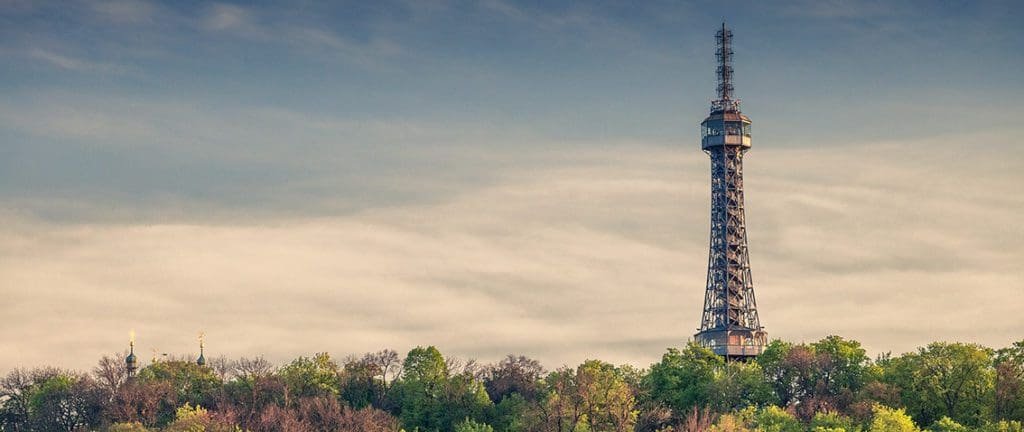
Visitors can climb to the top of the tower, which provides a breathtaking panoramic view of Prague. The climb can be done either by stairs or by using the elevator. Additionally, the tower is surrounded by a park, Petrin Hill, which offers a peaceful retreat from the city bustle.
The tower also serves as a transmitter for TV and radio signals and has a restaurant on the ground floor. The Petrin Lookout Tower is an iconic landmark of Prague and a must-visit attraction for tourists visiting the city.
Charles Bridge
Charles Bridge is one of the most iconic landmarks of Prague, Czech Republic. The bridge spans across the Vltava River, connecting the Old Town with the Lesser Town and the Prague Castle. The bridge was constructed in the 14th century and is named after King Charles IV, who ordered its construction.

The bridge is adorned with 30 Baroque-style statues and statuaries, each with its own unique story and history. The statues were added during the 17th and 18th centuries, replacing the original Gothic-style sculptures.
The bridge is also known for its street artists, musicians, vendors, and performers, who add to its lively and vibrant atmosphere. Today, the bridge is a popular tourist destination and attracts thousands of visitors each day who come to enjoy the stunning views of Prague, take in the historic architecture and learn about the fascinating history of this iconic structure.
Basilica of St. Peter and St. Paul
The Basilica of St. Peter and Paul is a stunning neo-Gothic church located in the Vyšehrad complex of Prague. It was built in the late 19th century by architect Josef Mocker and featured two tall towers, intricate sculptures, and stained glass windows. The church is a popular destination for tourists and locals alike due to its impressive architecture and stunning views of Prague from its hilltop location.

Inside the church, visitors can admire the beautiful interior with high vaulted ceilings, ornate altars, and colourful frescoes. The Basilica also houses a small museum with exhibits on the history of the church and the Vyšehrad complex.
In addition to its religious significance, the Basilica of St. Peter and Paul is also an important cultural landmark in Prague. It hosts regular concerts and events, attracting visitors from all over the world. The church is a must-see for anyone visiting Prague, offering a glimpse into the city’s rich history and cultural heritage.
TV Tower
The TV Tower in Prague is a unique and recognisable landmark that dominates the city’s skyline. Standing 216 meters tall, it is the tallest building in the Czech Republic and offers unparalleled views of the city from its observation deck. The tower was built between 1985 and 1992, and its futuristic design was controversial at the time of construction.
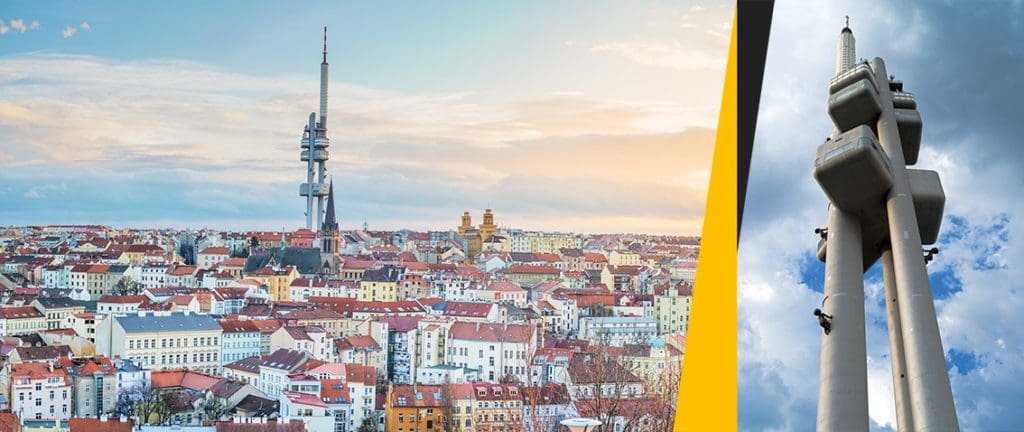
The tower features a distinctive, space-age design that is both functional and artistic. Its observation deck, located 93 meters above ground, offers stunning panoramic views of Prague and the surrounding countryside. In addition to the observation deck, the tower also houses a restaurant, hotel rooms, and a transmission centre for television and radio signals.
Despite its initial controversy, the TV Tower in Prague has become an iconic symbol of the city, attracting thousands of visitors every year. Its unique design and breathtaking views make it a must-see attraction for anyone visiting Prague.
Head of Franz Kafka
The Kafka Head statue is a unique piece of art located in the busy shopping district of Prague, Czech Republic. It is a giant, rotating statue of a head that appears to be made up of small pieces of metal. The statue is inspired by the famous Prague-born writer Franz Kafka, who wrote several works exploring themes of alienation and absurdity.
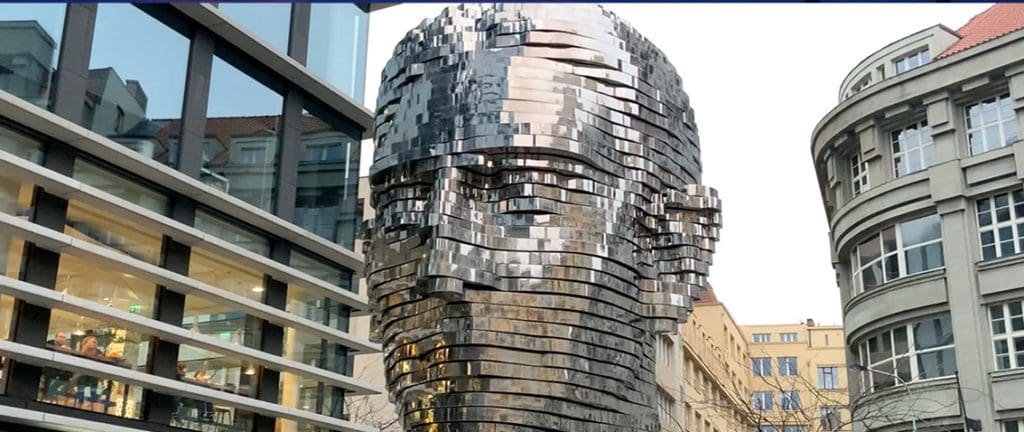
The sculpture is 11 meters tall and weighs over 39 tons, making it an impressive sight to behold. It was created by Czech artist David Černý and was installed in 2014. The statue is located outside of the Quadrio shopping centre, and its rotating head can be seen from all angles.
The Kafka Head statue has become a popular attraction in Prague, drawing tourists and locals alike. It serves as a symbol of the city’s appreciation for art and literature, as well as a tribute to one of its most famous writers. Visitors are encouraged to take photos of the statue and marvel at its impressive size and intricate design.
Where to stay
During our trip to Prague, we stayed at Don Giovanni Hotel. This is a 4-star hotel located in Prague, which offers a garden, private parking, a shared lounge, and a terrace for its guests. The hotel is situated 3.8 km away from the Historical Building of the National Museum of Prague. The accommodation has an ATM and a concierge service for the convenience of the guests. All rooms at the hotel have a desk, a safety deposit box, and a wardrobe. Some rooms also offer city views.
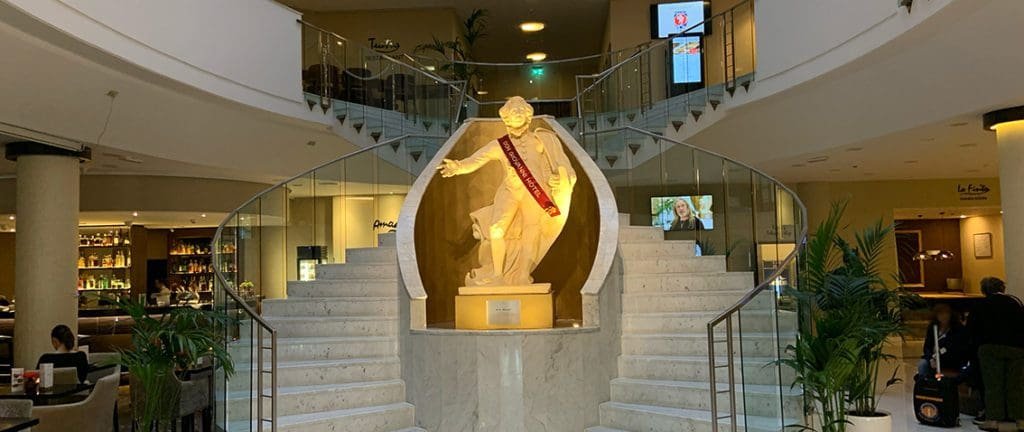
The hotel serves an Italian, American or vegetarian breakfast every morning. There is also a restaurant at the hotel that serves American, British and Austrian cuisine. Vegetarian, dairy-free and gluten-free options can also be made available.
Don Giovanni Hotel Prague – Great Hotels of The World has a 24-hour front desk, and the guests can also benefit from the airport transfer and room service. Free WiFi is available throughout the property. Municipal House and O2 Arena Prague are located at a distance of 5.6 km and 5.9 km from the accommodation, respectively. Vaclav Havel Prague Airport is the nearest airport which is 17 km away from the hotel.

Don Giovanni Hotel – Prague
Discover a home away from home!
Book your ideal hotel experience today
Our experience was pretty good with the hotel. We went there as a family with four kids. Although the hotel is rather designed to accommodate people on business trips or couples, the hotel staff made everything to ensure we were well looked after. Our stay was great. The rooms were nice, clean and comfortable. The rooms’ interior was designed with Mozart quotes on the wall and nice artworks hung on the walls. We all enjoyed the hotel and its really good location in the city that made getting around very easy with public transport.
Our travel rating of the hotel:
| Staff: | 10/10 |
| Comfort: | 9/10 |
| Free WiFi: | 10/10 |
| Facilities: | 9/10 |
| Cleanliness: | 9/10 |
| Location: | 9/10 |
| Value for money: | 9/10 |
Good to know:
5 interesting Facts about Prague
- The astronomical clock in Prague’s Old Town Square is one of the oldest working astronomical clocks in the world. It was first installed in 1410 and still chimes every hour to this day.
- Prague has a rich history of puppetry, with puppet shows dating back to the 17th century. Today, the city is home to several puppet theatres, including the National Marionette Theatre, which puts on performances of Mozart’s “Don Giovanni” using life-size marionettes.
- The Charles Bridge, which spans the Vltava River in Prague, has 30 statues lining its sides. The oldest statue, of St. John of Nepomuk, dates back to 1683.
- The Czech Republic is known for its beer, and Prague has a long history of brewing. The city’s first brewery, the Břevnov Monastery Brewery, was established in 993, and today there are many pubs and microbreweries throughout the city.
- Prague is home to the largest ancient castle complex in the world, according to the Guinness Book of World Records. The Prague Castle complex dates back to the 9th century and covers an area of over 70,000 square meters.
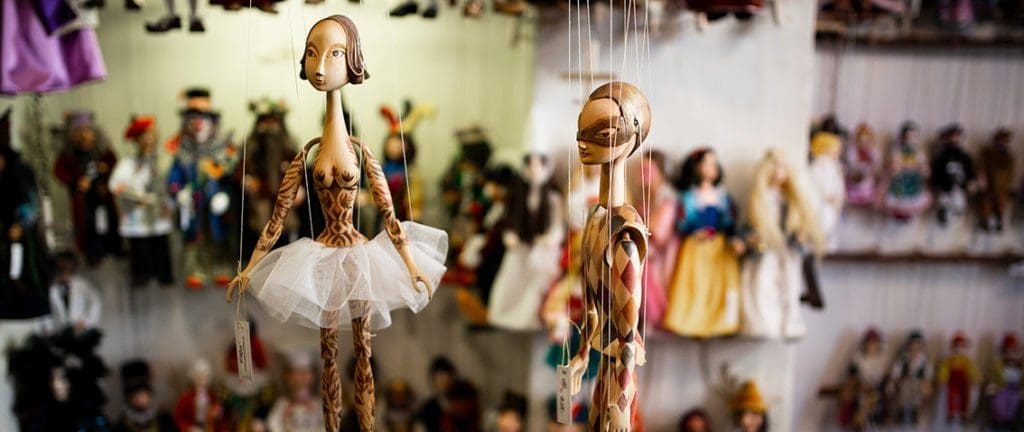
5 famous people that lived in or visited Prague
- Franz Kafka – the renowned German-speaking writer and philosopher, lived in Prague for most of his life and wrote many of his famous works there, including “The Metamorphosis” and “The Trial.”
- Wolfgang Amadeus Mozart – the famous composer, visited Prague several times during his life and premiered his opera “Don Giovanni” in the city’s Estates Theatre in 1787.
- Albert Einstein – the Nobel Prize-winning physicist, briefly lived in Prague in the early 1910s and worked at Charles University as a professor.
- Johannes Kepler – the German mathematician and astronomer, spent the final years of his life in Prague, where he served as the imperial mathematician at the court of Rudolph II.
- Gustav Mahler – the Austrian composer and conductor, worked as the director of the Prague State Opera from 1885 to 1891, where he premiered several of his own works.
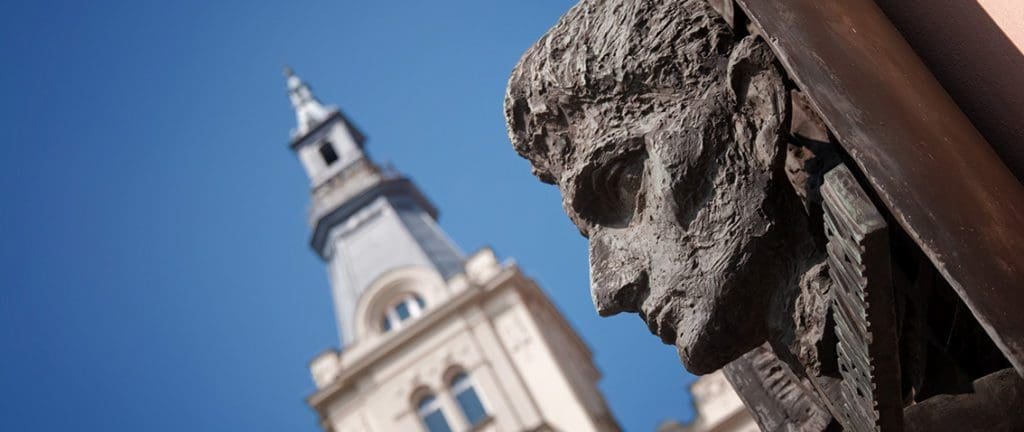
History of Prague:
Prague has a rich prehistory dating back to the Paleolithic Age, with the area being inhabited by various tribes and peoples over the centuries. The Celtic Boii tribe was the first known inhabitants of the region, followed by the Germanic Marcomanni tribe. The Slavs were also present in the area as early as AD 512. According to legend, Princess Libuše, the sovereign of the Czech tribe, founded the Přemyslid dynasty and prophesied the glory of Prague from her castle Libusin, located in central Bohemia. She foresaw a vast city with a castle named Prague (Praha) built on a steep cliff above the Vltava River, which would be honoured and praised by the entire world.
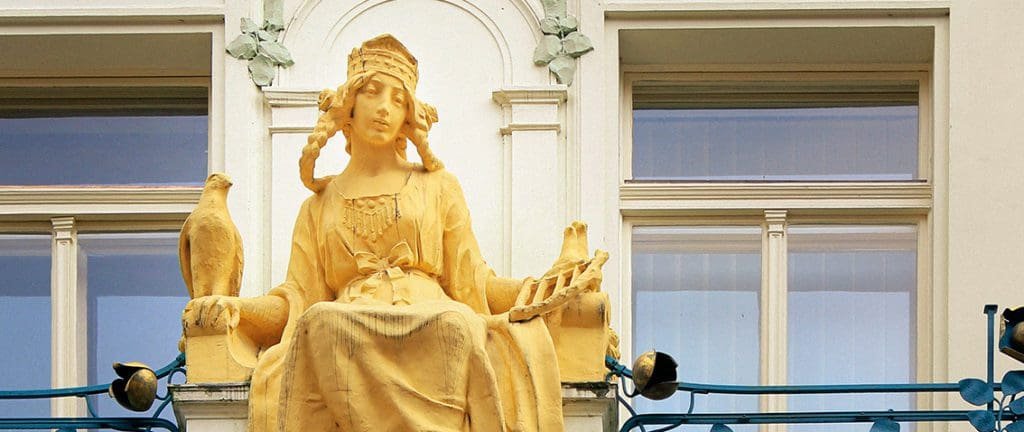
Bohemia, located in the present-day Czech Republic, was dominated by the Přemyslid dynasty rulers from the 9th century until 1306. The vicinity surrounding Prague Castle, which is among the most extensive fortified residences in Europe, grew into a significant commercial hub that attracted traders from various parts of Europe. Bořivoj, the first Bohemian ruler acknowledged by historians, built Prague Castle around 880 and moved his seat there from the fortified settlement of Levý Hradec. Wenceslas, Bořivoj’s grandson, wanted Bohemia to become an equal partner in the larger Empire and initiated friendly relations with the Saxon dynasty. His assassination resulted from his brother Boleslav’s opposition to this orientation. In the early 10th century, Prague Castle became an important trading centre where merchants from all over Europe gathered. Bohemia became a hereditary kingdom when Prince Přemysl Otakar I was king by inheritance from Frederick II in 1212. During his reign, peaceful colonisation began. In the 13th century, towns grew in size, driven by the institution of German town law and the immigration of Germans. Three settlements around Prague Castle gained the privilege of a city. Across the river, Vltava, the Old Town of Prague – Staré Město, became a town in 1230, and the settlement below Prague Castle became the New Town of Prague in 1257, later renamed Lesser Town (or Quarter) of Prague — Malá Strana. The Castle District — Hradčany, built around its square, just outside Prague Castle, dates from 1320.
Prague was a flourishing city during the 14th century under the reign of Charles IV of the Luxembourg dynasty, who made efforts to make it a centre of art, science, and prestige. Charles built the bishopric of Prague and founded Charles University in 1348. He rebuilt Prague Castle and Vysehrad and also erected the Charles Bridge. He wanted Prague to be the most beautiful city in the world and the dominant city of the whole empire. Under his reign, the Czech Lands were among the most powerful in Europe. However, things changed under the rule of King Wenceslas IV, the weak son of Charles IV. Jan Hus, a preacher, was executed in 1415 in Constance, leading to the Hussite wars in 1419. In 1420, peasant rebels, led by Jan Žižka and Hussite troops, defeated Sigismund in the Battle of Vítkov Mountain. After Sigismund’s death, Albert II, Duke of Austria, became the Bohemian king for two years. Then Ladislaw Posthumous became the king, but he died at 17. The nobleman, George of Poděbrady, was chosen as the Bohemian king during his reign. Ferdinand Habsburg became the next king of Bohemia and started the Habsburg dynasty. Following the resignation of his brother Charles V from the position of Emperor in 1556, Ferdinand was selected as the Emperor in 1558. Rudolf II inherited all his titles after his father, Maximilian II. During his reign, Prague again became the cultural centre of the Holy Roman Empire. Rudolf II was related to the Jagellon dynasty, the Luxemburg dynasty, and to the Premyslovec dynasty.

The 17th century was considered the Golden Age of Jewish Prague, with a Jewish community of around 15,000 people, making it the largest Ashkenazic community in the world. The Maharal was a renowned Jewish scholar and the chief rabbi of Prague from 1597 to 1609. The Jewish community of Prague suffered a severe blow in 1745 when they were expelled by Maria Theresa of Austria due to their alleged collaboration with the Prussian army. The Jews were allowed to return in 1748. In 1848, the Prague ghetto was opened, and the former Jewish quarter was demolished during the “ghetto clearance” around the start of the 20th century.
The economic rise of Prague continued in the 18th century after a great fire in 1689. The city had 80,000 inhabitants in 1771, with wealthy merchants and noblemen creating a Baroque style with palaces, churches and gardens. The four municipalities were merged into a single entity under Joseph II in 1784. The Industrial Revolution and Czech National Revival movement also impacted Prague. The Czech nationalist movement gained the majority in the Town Council in 1861. In 1867, the Austro-Hungarian Dual Monarchy was founded by Emperor Francis Joseph I, which included both the Austrian Empire and the Kingdom of Hungary.
After the suicide of Crown Prince Rudolf, Francis Ferdinand d’Este became the next in line for the Austro-Hungarian throne. His assassination in Sarajevo in 1914 sparked World War I. The war led to the defeat of the Austro-Hungarian Empire and the creation of Czechoslovakia, with Prague as its capital. During this time, Prague experienced a growth in population and industrial development.
Prague was ethnically diverse, with Czech, German, and Jewish populations. The German population decreased over time due to the influx of Czechs and assimilation. Following Czechoslovakia’s independence, Prague’s German minority faced discrimination. During the first half of the 20th century, Prague attracted German-speaking emigrants, including notable writers. However, during World War II, the city’s Jewish population suffered greatly, with most fleeing or being killed in the Holocaust.
Prague was occupied by Nazi Germany, and its citizens faced oppression and persecution. The city was targeted by Allied bombings, resulting in significant destruction. The Prague Uprising occurred in 1945 when Czech citizens revolted against the German occupiers. The arrival of Soviet tanks marked the end of the fighting, and Prague fell under Soviet political influence.
After the war, Prague became the capital of Czechoslovakia, although the German and Jewish populations had significantly diminished. The city experienced a communist coup in 1948, leading to a period of totalitarian rule. The intellectual community of Prague suffered under the regime. However, efforts were made to rebuild and care for the damaged monuments.
In 1968, the Prague Spring sought democratic reforms but was suppressed by the Soviet Union and other Warsaw Pact countries. During the communist period, little was done to maintain the city’s buildings, resulting in deterioration. After the collapse of communism in 1989, Prague underwent extensive renovation and revitalisation. After the division of Czechoslovakia in 1993, Prague was designated as the capital city of the newly formed Czech Republic.

Today, Prague serves as the capital city of the Czech Republic and is divided into two administrative units. The town has undergone significant transformation and restoration, benefiting from the post-communist era and embracing its rich historical and cultural heritage.








